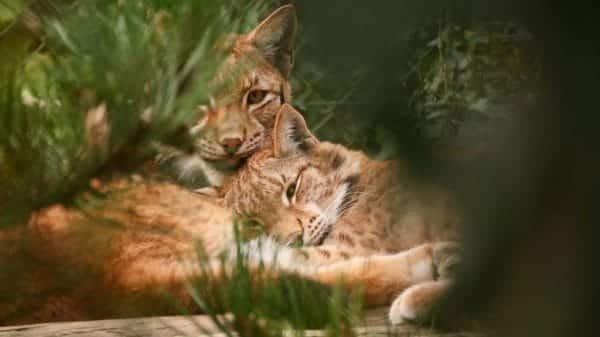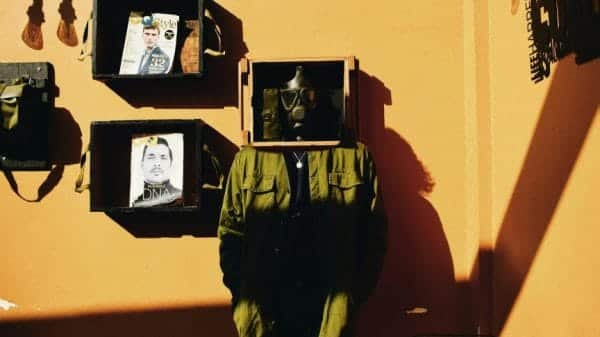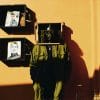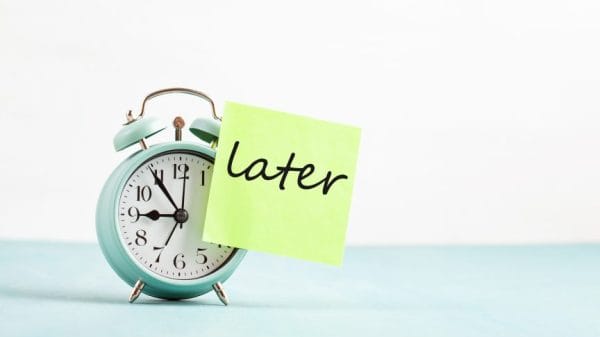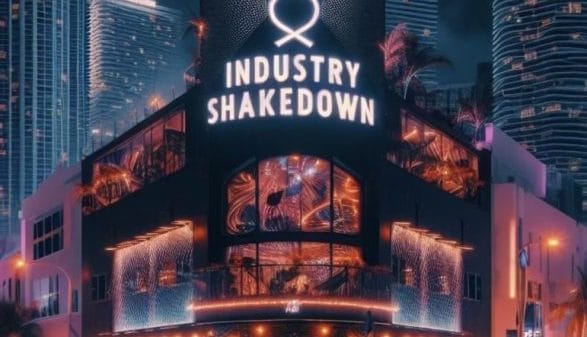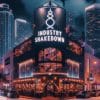You can crudely divide history into three stages.
In the first, humans emerged, living as nomads and hunter-gatherers. They didn’t necessarily resemble the Spongegar meme — for one, they weren’t sponges — but they at least knew how to build a spear.
In the second, humans farmed. They built cities and empires — and hunted “heathens” and “witches.” Then there’s our present third stage: a generation filled with TikTok influencers and billionaires racing to Mars.
When we think about the past, especially medieval times, we often distance ourselves from it — like that one awkward phase we went through in high school (did the Middle Ages have high schools? I guess, craft schools?)
Yet recently, many have been kicking around the idea that our present and the Middle Ages aren’t so different. Of course, comparing ten centuries’ worth of history to a little over two years isn’t exactly proper. That would be like comparing elephants to mice. Rather, one can argue there are certain elements from our culture that, while not identical, hint at a medieval condition.
Abracadabra!
Many people really like the Middle Ages. HBO’s House of the Dragon drew nearly 10 million viewers on its premiere; Stranger Thing’s latest season re-sparked people’s interest in Dungeons and Dragons; and corsets have become a fashion mainstay since 2018. But liking the Middle Ages doesn’t necessarily imply we live in the Middle Ages.
Bear with me.
Something that has long defined the Middle Ages has been its obsession with magic. In an era perturbed by the Black Plague and Hundred Years War, people resorted to magic and superstition to make sense of an otherwise difficult world. (Sounds familiar?)
Tarot and astrology have experienced a mass resurgence in the past few years. According to Google Trends, searches for “astrology” and “birth chart” both hit a five-year high by the end of 2020. Meanwhile, tarot decks increased by half in sales in the last five years. In an interview with the Washington Post, Lynn Araujo, editorial and communications director for U.S. Games Systems, predicted tarot decks tripled in sales during the first year of the coronavirus pandemic. She also explained a similar surge occurred during the 2008 financial crisis when people were looking to process their fears and anxieties.
It is in our nature to turn to a higher power for help. But as religious apathy grows in the west, many people have sought out alternative belief systems. Like our ancestors, tarot and astrology have provided a coping mechanism. They have helped people make sense of themselves, their love lives, and the future during these trying times.
Then there’s everyday magic – like healing, alchemy, and astrology. Today, we can consider these concepts as early predecessors to medicine, chemistry, and astronomy — but with a lot of guesswork and magical ritual mixed in. “Magic” served as a means to getting something done during the Middle Ages, not unlike today’s smart technology.
Picture this: you must travel a long trip. To do so, you travel inside a large bird-shaped box. You wish to see a loved one, but they live elsewhere on the planet; you use a mirror to speak to them. You’re sick with an illness; a sorcerer cures you.
In 1968, famed futurist Sir Arthur C. Clarke once argued that any sufficiently advanced technology could be considered indistinguishable from magic. Unless you’re an engineer, scientist, or doctor, chances are you probably don’t know how airplanes, cell phones, or a drug works.
If you don’t know how something works, it feels like magic. If you know how something works, it feels like technology. If you’re using tech every day but don’t know how it works, in the end, how different is it from magic?
In __ we trust
When the Middle Ages ended, it wasn’t because Christopher Columbus “discovered” America but because of an entire paradigm shift in how people thought about the world.
When we think about the Middle Ages, we often perceive it as a period led by belief and superstition. Education was harder to come by in the Middle Ages, and those who received an education either learned at home with a tutor or from the church. Because of this, religion informed every subject that students learned. By 1543, the Scientific Revolution sought to revise this, urging people to look at the world with skepticism.
Modern times, however, have experienced a bit of a backslide. It is undeniable that non-factual arguments and “alternative facts” have had a moment for quite some time now. In 2020, conspiracy theorists set cell phone towers on fire because they believed 5G towers spread the Covid-19 disease – even though countries with no 5G towers still suffer from the epidemic. In California, children have been getting measles and mumps, even though studies have shown there exists no link between autism and the MMR vaccine (however, California has enforced stricter vaccination laws since 2019). Meanwhile, more than a quarter of U.S. Congress representatives continue to reject human-caused climate change, despite evidence to the contrary.
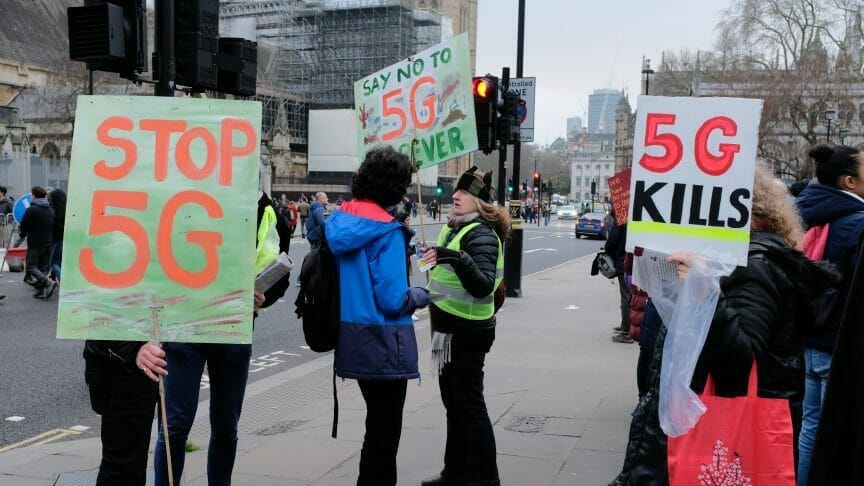
Our present has adopted a post-truth mentality – a world in which objective facts less persuade public opinion than by emotion or personal beliefs.
Our problem has become the opposite of what medieval people faced. They lacked adequate information, so they filled in the blanks with whatever they felt like. We, on the contrary, have way too much information and often end up having to pick and choose what to believe.
From this, communities have become more disconnected. Just like people in the Middle Ages were split into many different duchies and earldoms, we’ve again split up into different factions; however, now online — thanks to Internet forums, social networking sites, etc.
Our different identities and politics have made it difficult for us to communicate with each other, while filter bubbles have shielded us from seeing views other than our own. Whereas heretics were brutally persecuted by the Catholic Church in the late Middle Ages, today’s politics are beset by a similar dogmatism.
Fire and Brimstone
During medieval times, the Catholic Church took center stage in people’s lives. Although the term “anxiety” was not commonly used then (better known as anxietas in Latin or anguish in English), the church made anxiety a key component of spiritual life.
If not a fear of sickness or painful death, the fear of hellfire and judgment weighed on people’s lives. St Thomas’ Church in Salisbury, England, perfectly captured this; its most famous painting depicts sinners being dragged into hell while a scroll reads, “there is no escape for the wicked.”
Last year, doomer doctors garnered a sizable following on Twitter after predicting the pandemic would force pharmacies to close their doors by February 2022 (though one did revisit her prediction). Doomer professors are being praised on Reddit for predicting that the end of society is nigh. Some doomers have chosen nihilism over electoral politics, while others are making “bug out” kits for when the world ends.
There is a persistent feeling that the end is near. However, we have a cartoon dog burning in flames instead of interpreting that feeling through judgment day paintings. Our collective anxiety is becoming more inward and reflexive. In the same way that people in the Middle Ages worried about being punished for their sins, our modern problems seem like something we’ve brought upon ourselves.
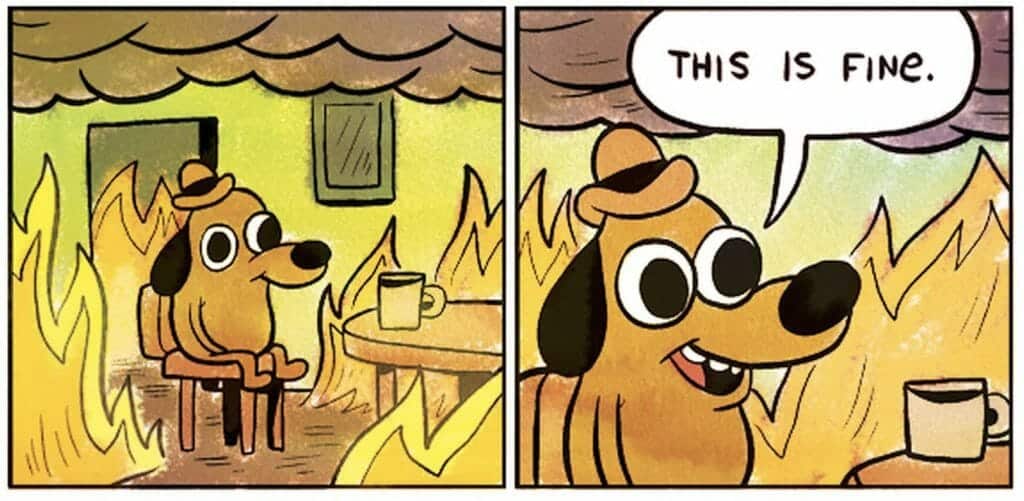
However, there is a silver lining. The Renaissance marked a transition period between the Middle Ages and modernity. The period offered advancements in the sciences, philosophy, and the arts.
Of course, our 21st century isn’t perfect. Yet, our world keeps evolving at a breakneck pace. Advancements that before required five hundred years are now possible in less than ten to five years.
The COVID-19 vaccine was able to be mass-produced in a year without compromising safety. Global poverty has decreased from 1.9 billion in 1990 to about 736 million in 2015. And compared to 2012, our memes today have become *chef’s kiss.*
Surely, not everything discussed applies to everyone or everywhere; many of these ideas are vastly Eurocentric and apply to communities that spend a large part of their lives online. Similarly, dismissing the Middle Ages as the “Dark Ages” can be unfair because of their many complex facets. Yet, that’s the innate flaw of any generalization.
But who knows? In the end, it all depends on how we want our history to go.







